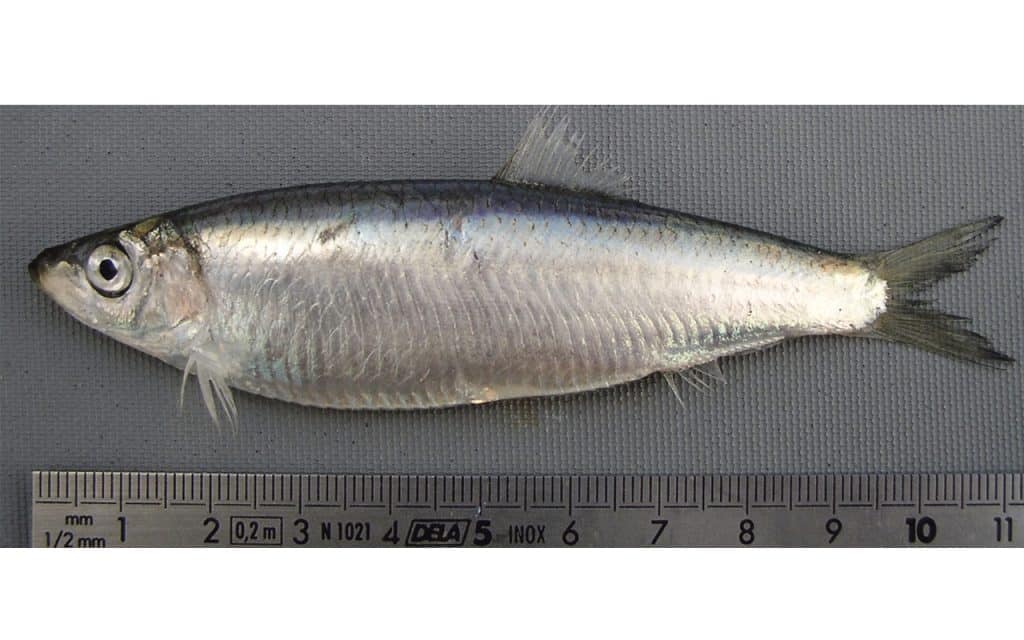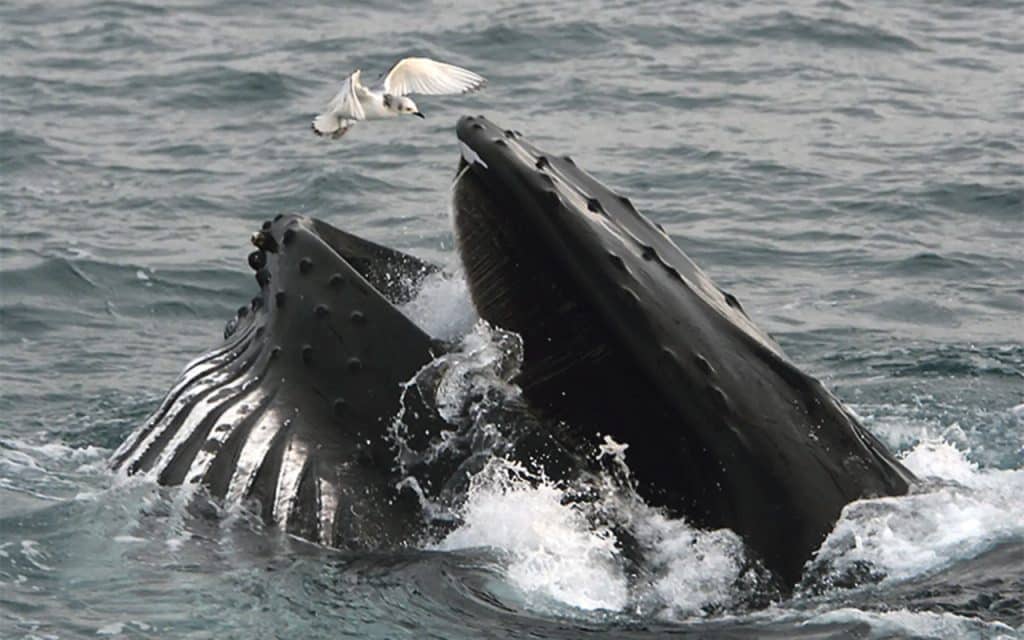When I was young, I often sat alone by the beacon at Wood Point, looked out across Courtmacsherry Bay, and day-dreamed. The sea then seemed infinite and clean, unspoiled by Man. One day, I would sail away, over the horizon; (I never did). But now, if I can even find somewhere to be alone, gazing at the sea only makes me sad. It is ruined. There is more plastic than fish. It is becoming acidified, so shellfish have difficulties making shells and coral reefs are suffering from something like osteoporosis. Dolphins and turtles get strangled in ghost nets, sea birds are starved, and so many fish species are endangered.
One humble little fish has recently been in the news. The formation of a group called ‘Save Our Sprat’, to stop the indiscriminate fishing for sprat in Bantry Bay, was reported in this paper in May. Without sprats, there will be no puffins, no guillemots, no mackerel, no dolphins, no whales. Actually, there have been warnings from environmental groups and marine tourism operators about unregulated sprat fishing for many years. But will the government do anything?

The European sprat, Sprattus sprattus, is one of five species of true sprat (the others are all found in the southern hemisphere). They belong to the order Clupeiformes – the herring-like fish. The young live in estuaries and shallow bays, the adults down to a depth of 50 metres or more. They feed on zooplankton (all the tiny animals that float in the sea), and grow to a maximum of 12 cm. Five similar fish from this order are also found in European waters: the Atlantic herring, the pilchard (or sardine), the twaite shad, the allis shad and the anchovy.
Worldwide, there are hundreds of species in the order Clupeiformes, most of them important food fish. In South America, for example, the Peruvian anchoveta is the most heavily exploited fish in the world – over eight million tonnes landed in 2021. In the great lakes of central Africa, clupeiform fish are a major source of protein for millions of poor people. The Tanganyika sprat and Tanganyika sardine (both called kapenta by the locals) are caught at night by fishermen in canoes or small boats, using lights to attract the fish to their nets, which are sometimes nothing more than mosquito nets tied together. The sight of hundreds of lights from these boats, sparkling on a calm black lake, is quite magical. The fish are landed in the early morning and dried in the sun. Their pungent fragrance is an inescapable part of any African market; a friend of mine in Zambia always banished his maid to the garden, with frying pan and brazier, every time she attempted to cook kapenta for lunch.
I was once on an old steamer, the ‘Liemba’, travelling from Kigoma in Tanzania, down Lake Tanganyika, to Mpulungu, Zambia’s only port. On the foredeck, among the jumble of people, luggage, sheets of corrugated iron, timber, drums of cooking oil, crates of beer, bicycles and stacks of bananas, there were mounds of pineapples. But as we travelled south, stopping offshore from little villages of mud huts, small boats would motor or paddle out with new passengers and sacks of kapenta, and take away departing travellers and pineapples. So after three days, the ship no longer smelled sweetly fragrant, but very fishy.
In Europe, the most important fish in this order was always the herring. In the days before refrigeration, herrings were salted, then heavily smoked until they were dry and coloured red. These preserved fish, called red herrings, could survive for weeks without going bad. Their smell was so strong, they were used to teach hunting dogs how to follow a scent. “Red herring” was first used as a literary device by the English writer and politician William Cobbett who, in an article he wrote during the Napoleonic Wars, compared the London press to a pack of hounds confused by a false trail of red herrings, something he did as a child. (I should get some for next winter’s hunting season).
Nowadays, fish are smoked for flavour, not preservation. Kippers are herrings that have been split, lightly salted and smoked. Bloaters are ungutted cold smoked herrings; buckling are gutted and hot smoked. Raw herring fillets with onion are a Dutch speciality, while in Sweden there are dozens of varieties of pickled herrings, flavoured, for example, with dill, mustard or curry sauce.
Sweden is also responsible for one of the most disgusting types of preserved fish – surströmming. It is made from the Baltic herring, a small sub-species very similar to a sprat. These are lightly salted and left to ferment for at least six months. Then they are canned, while still bubbling away, so when you eventually buy a tin, it is bulging. Plunge your can opener into it, and you will be met with a most horrendous stink – just like the “rubby-dubby” (rotten mackerel) used by anglers to attract sharks.
Pilchards, of course, are important commercial fish too. There used to be a major fishery for them in West Cork up to the early 18th century. Their oil was extracted in buildings called pilchard palaces; there were several in Courtmacsherry. In Cornwall, shoals of pilchards were once so vast, they could be seen from shore, but by the 1960s, the few remaining pilchard luggers were mostly used for angling. Pilchards are still caught there today, though marketed as Cornish sardines.
Of the other herring relatives in northern Europe, anchovies are only seen in tins, while shad are not prime eating fish. Sprat are good to eat, though they are often marketed under different names. In Britain, they are part of what is called “whitebait”, which can be many different types of small fish, usually deep-fried. Sprats that have been lightly smoked and canned are called brislings. In Ireland, they are mostly ground up into fish meal, although one company from Killybegs does sell cans of “wild Irish sardines” which, according to the ingredients, are sprats. One of Sweden’s much more palatable national dishes is Jansson’s Frestelse, a gratin of potato strips, onions, cream and what they call ansjovis, but which are actually spiced sprats.
In January and February of 1995, huge shoals of sprat came right into Courtmacsherry Harbour, attracting flocks of kittiwakes, herring gulls and black-headed gulls. People caught them with small nets from the pier. I examined some of those fish – most were ready to spawn. Sprat are serial spawners, i.e. their spawning season can last for several months. A study of sprat eggs on the south coast in the 1980s showed that they first spawned close inshore on the Cork coast in mid-February, but gradually moved offshore, so that by July, most of the eggs were far off the Waterford coast. This makes it imperative that fishermen know when the fish are spawning and when they should not be caught.
Fish such as herring, mackerel and cod once lived in such enormous shoals that overfishing seemed inconceivable. But many fisheries around the world have crashed, e.g. herring in the Irish Sea in the 1980s, mackerel off Cornwall in the same decade, cod off the Grand Banks of Newfoundland in the early 90s. With strict regulations, however, exhausted fisheries can recover.
Sprat populations always fluctuate, due to variations in water temperature and food availability. There are good and bad years. Fluctuations in the Mediterranean sprat population are thought to be related to increased numbers of an invasive species of ctenophore, Mnemiopsis leidyi, due to a rise in sea water temperature. This animal, which resembles a little jellyfish, but without the stinging cells, eats zooplankton, including sprat eggs. Ctenophores, or comb jellies, which are rarely more than a couple of centimetres in diameter, have rows of cilia, like combs, with which they move; light reflected from these beating cilia produce waves of rainbow colours, especially impressive at night. There are several species in our waters, all predatory. Mnemiopsis leidyi arrived in the Black Sea in the 1980s in the ballast tank of a ship from America, and has since spread throughout the Mediterranean and eastern Atlantic.
Whatever the cause of the sprat decline, fishing by large trawlers in inshore waters is going to deplete already struggling populations. It is also unfair on local fishermen with small boats, as well as whale-watchers. I know many fishermen; some of my best friends are fishermen. They have a tough life. Perhaps some are greedy, perhaps some have no choice, but I wonder do any of them think how totally wrong it is to be catching sprats, depriving other sea creatures of a vital food source, just to have them ground up and fed to salmon, pigs and chickens?



